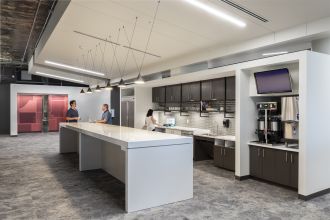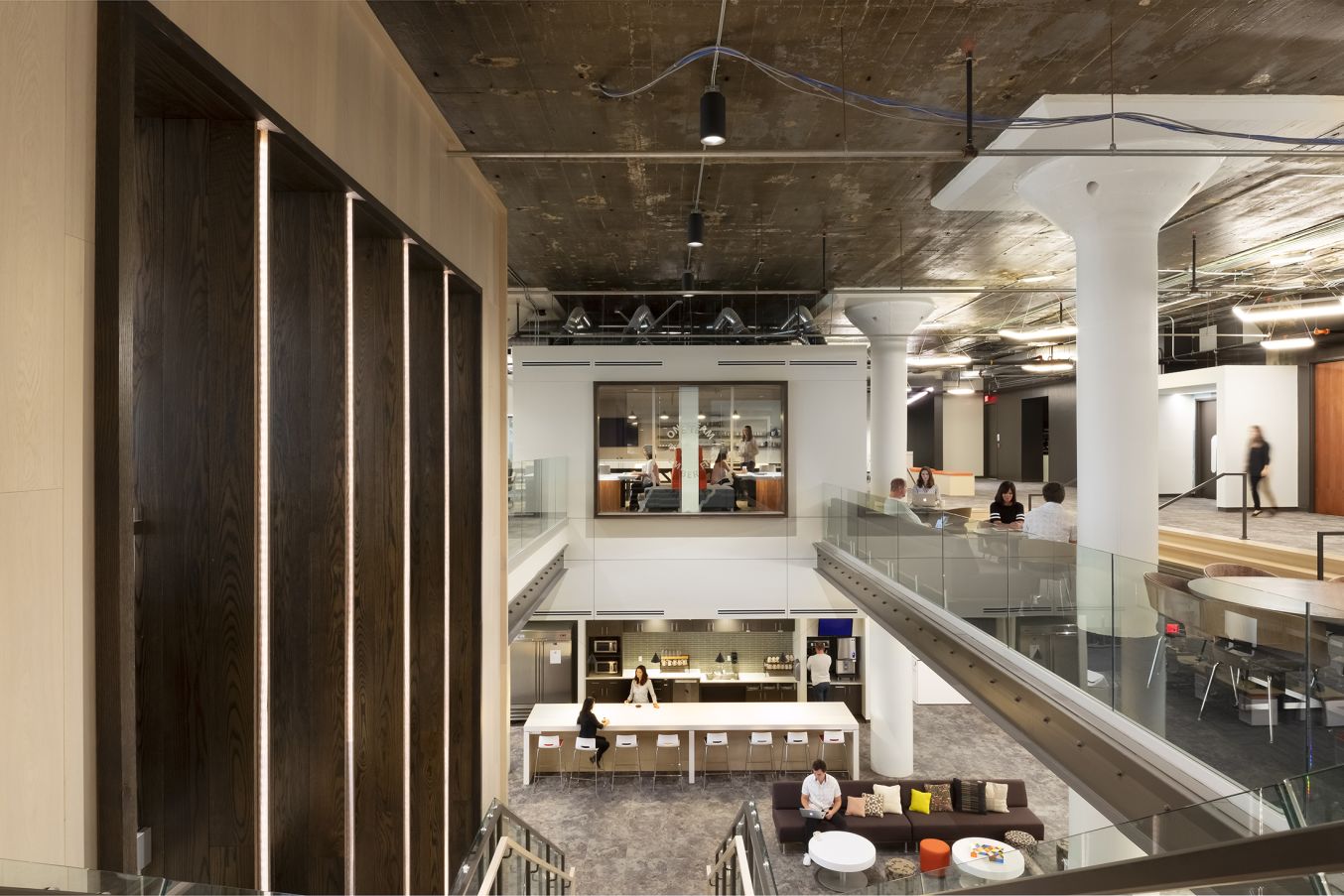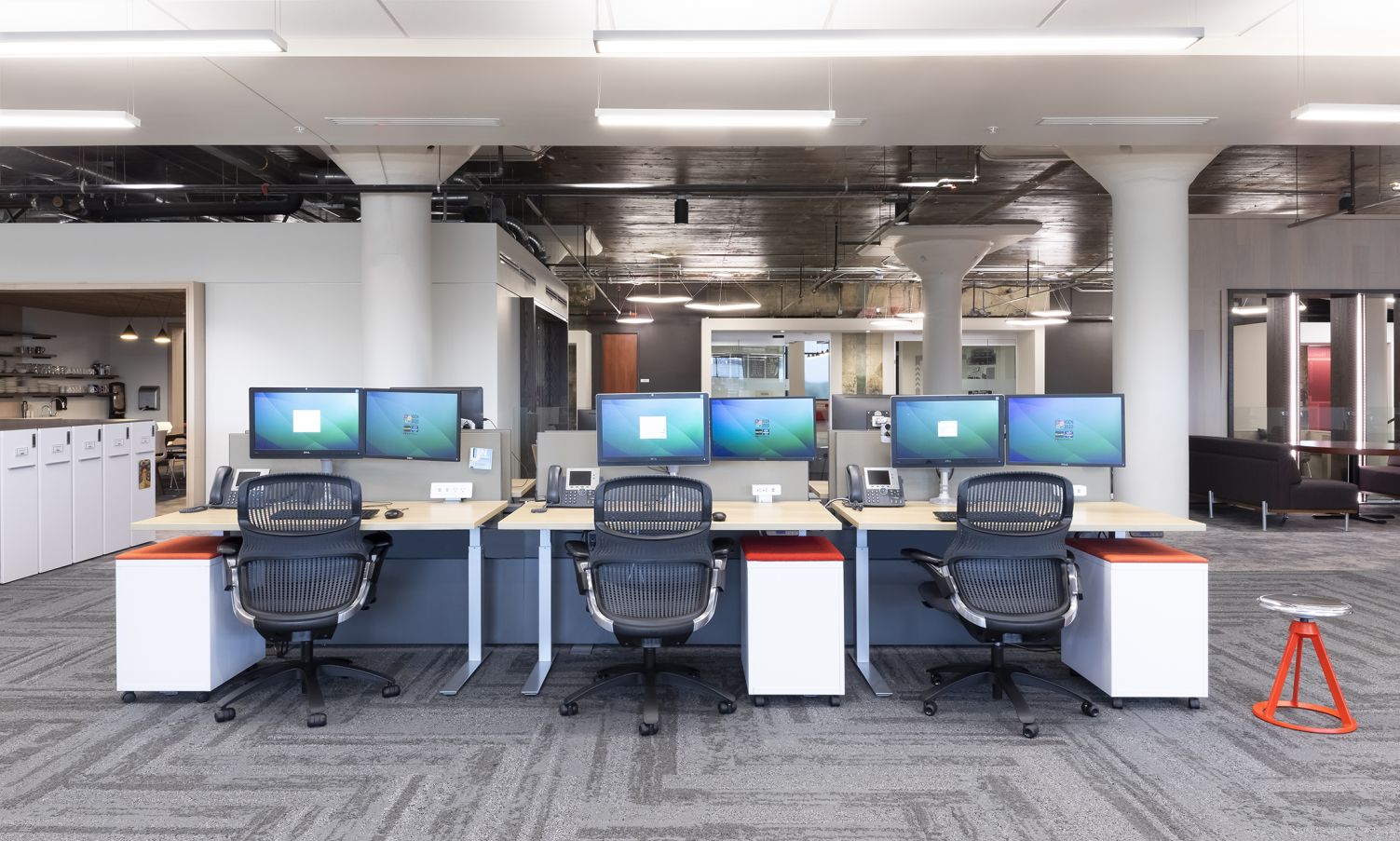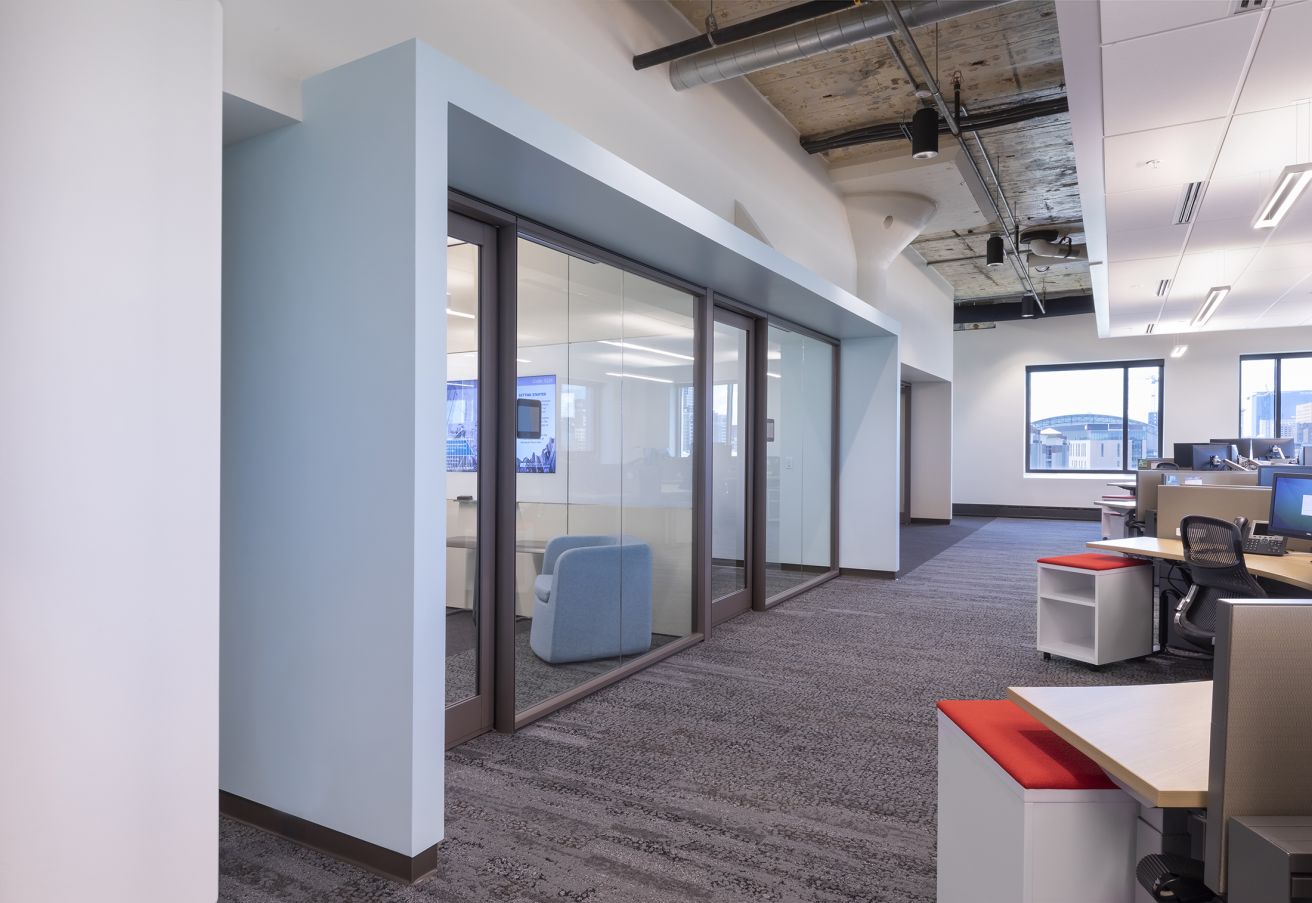Confidential Corporate Office
Indianapolis, IN




Space Details
Size
100,000 square feet
Number of Employees
350
Square Footage per Employee
286 sq.ft/employee
Year of Buildout
2018
Company Information
Who Worked on This Space?
General Contractor
Architect
Furniture Vendor
Location
225 S. East St. #100 Indianapolis, IN
About Confidential Corporate Office
For more than 80 years, our company has protected fellow Hoosiers. Today, we offer insurance products for auto, life, home, business, and farm. We care about our community and donate time, talent, and treasure to youth, agriculture, wellness, and safety organizations, as well as civic, economic, and cultural programs. Our employees are also encouraged to take paid volunteer time to give back.

More About This Space
How does this space drive productivity, collaboration, and connectivity?
After nearly 25 years of working in the same tired space, we were ready for an upgrade. Our headquarters – whose main structure was constructed in the early 1900s – had not seen any major renovations or remodels since 1992. While the space was well-maintained, we had to leave behind its decades-old design philosophy if we wanted to attract and retain young, talented employees. The design team tackled our project from a three-dimensional perspective, turning an aging office environment into an open one with an ecosystem of support spaces. A sunken conversation area with customized bench seating provides a more casual setting in which to work. By incorporating a variety of workspaces – and residential-style furniture – the design team created a dynamic environment that employees are excited to come to. The space also includes social hubs, providing employees with spots to interact and hang out. As individuals venture from the social hub and into the office area, they encounter a variety of meeting spaces, focus areas, and quiet “neighborhoods.” Transitional areas have lower ceiling heights, creating subconscious markers that inform individuals they are moving from one space to another. These “portals” appear in the spaces between the elevator lobby and social hub, and again between the social hub and the neighborhoods. Carpet and acoustic installations help establish each area.

What is one thing that is unforgettable when someone walks through your space?
The design team cut and removed a section of the floor, uniting our two-story office with a dramatic, central staircase. The area, known officially as One Team Portal, connects the fourth and fifth floors, allowing easy access and interaction. It accentuates the vertical floor plan and allows employees to travel between the two floors like never before. It’s an open, free-flowing floor plan. To further increase collaboration and connection, exterior wall offices were removed, and the C-suite was placed in a central location. This allows natural light to flood into the entire office. Structural glass railings around One Team Portal also allow unimpeded views to the exterior windows, especially for those entering from the elevator lobby.

How does your space tell your company's story and reflect its brand?
The materials palette pays homage to the Hoosier state. Flooring materials, for example, mimic aerial views of the Indiana landscape, both urban and rural. Tailored textiles were also used in conjunction with artisanal fabrics. Like the new, agile office furniture, the materials are timeless, not trendy. They provide a sense of comfort in an office that embraces “the power of choice.”

How does your space engage your employee base?
Before the renovation, the fourth and fifth floors felt isolated from each other. Now, a new steel-structured stair with glass railings allows employees to travel between the two floors easily, and provides a visual connection to the rest of the office. One Team Portal is also flanked by two social hubs — one “quiet” and one “active.” The active social hub is visually open to the larger office space and invites employees to be part of a conversation. The quiet social hub, on the other hand, serves as an introspective stopover for coffee and refreshments.